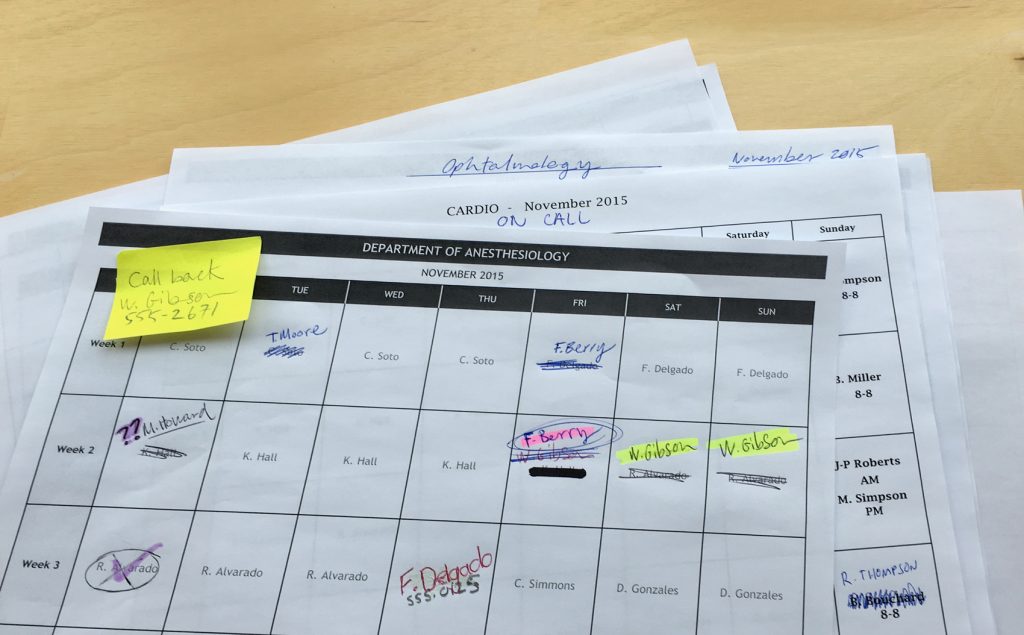
Phone tag is something every physician suffers through on a daily basis. Voicemails are left, colleagues get frustrated, and situations are not handled in a timely manner. Because of this, physicians resort to contacting one another using various methods that are seen as fast and efficient, but not secure, such as standard text messaging.
The Downfalls of Standard Texting Applications
Standard texting applications are the ones that come with every phone. One of those rare applications you never actually have to download, it’s just there. Although useful in our everyday personal lives, when it comes to hospital use, it is not as convenient.
A FierceHealthcare article headlines: Hospitals waste $11 billion a year on inefficient communication, showing that a lack of secure text messaging costs $1.75 million per hospital.
Inefficient communication costs #hospitals $11 billion a year #healthcare http://t.co/h9Ccztw8U7
— FierceHealth (@FierceHealth) July 29, 2014
Standard text messaging apps are also not linked to a hospital’s staff directory. This leaves you, as a physician or hospital staff member, to comb through the actual directory to find the information you need. It seems a bit counter-productive. Even so, finding that number to text will most probably be quicker than trying to reach that person through traditional hospital channels.
What’s more, these applications do not integrate with hospital on-call schedules. This means that in addition to having to find a colleague’s phone number, you also have to check which colleague you ACTUALLY need to contact. Sometimes, the information provided may not even be correct as hospital on-call schedules are hard to manage and keep updated. Bottom line, standard texting applications, although easy to use, still leave doctors scrambling to get ahold of one another.
My Patient is in Critical State, I Need To Reach My Colleague NOW
More often than not, when physicians need to contact one another, it pertains to time-sensitive situations. The use of standard text messaging applications often results in important messages being lost through the jumble of texts from friends and family.
If the only communication channels physicians have access to are lengthy and inefficient, it becomes almost easier to run through the hospital and tackle the person you need to talk to. Is this STILL the reality in 2015?
In today’s digital world, people have access to quick cross-border communication. So why is it SO difficult for some physicians to communicate, even in the same building?
OK, So I Have An Efficient Communication Channel, But is it Safe?
Here enters the most important aspect of physician-to-physician communication: security. Healthcare professionals need to relay important patient information and safeguarding the content of their messages is crucial. With the increasing cyber attacks, as highlighted in a Forbes article, hospitals and physicians need to lock up their information even tighter.
Standard texting applications are not secure, leaving all information shared to be easily stolen by even the basic hackers. Don’t leave private patient data at their disposal. Arm yourself and your patients.
How Do I Ensure My Messages Are Secure?
Ensuring your messages are secure starts with doing your homework. The best way to avoid a lawsuit, is to eliminate the use of any application or device you may think unsafe. Email? No more. Dropbox? Stay away. Regular text messages? What do you think?
Hospitals should provide their staff with ONE secure solution, allowing everyone to easily interact with each other on their mobile device, in a private manner. Using only one solution also diminishes the risk of communication mishaps and increases hospital-wide efficiency.
That being said, what if you are a physician looking for a solution on your own? Do you need to ask your department chief to ask his boss to ask his boss for a solution? Of course not.
So What Can I Use?

Secure messaging for physicians ensures that all your information is delivered quickly and privately, even as an individual. It allows for easy interaction between colleagues, abides to local laws and regulations, and provides cross-border communication.
Remember how difficult it was to contact a physician on another floor? Well no need to leave a voicemail or even tackle them in the hallway. It now takes the same amount of time to contact a physician within your hospital as it does to contact one across the COUNTRY. How fast can you say instantly? With more than 25,000 physicians at your fingertips, your running days are over.
